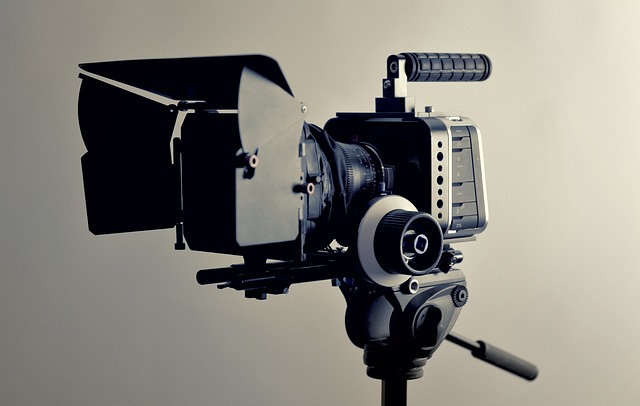The Resurgence of Avant-Garde Cinema in the Digital Age
In an era dominated by blockbusters and streaming platforms, a quiet revolution is taking place in the world of cinema. Avant-garde filmmaking, once relegated to niche audiences and art house theaters, is experiencing a remarkable renaissance. This resurgence is fueled by digital technologies, changing viewer habits, and a growing appetite for unconventional storytelling. As traditional boundaries blur, avant-garde cinema is finding new ways to challenge, inspire, and redefine the art of filmmaking.

Throughout the 20th century, avant-garde cinema remained a vital, if often marginalized, force in the film world. It influenced mainstream directors, inspired new waves of experimental filmmaking, and provided a platform for artists to explore the unique possibilities of the medium. However, limited distribution channels and the dominance of Hollywood often restricted its reach to academic circles and dedicated cinephiles.
Digital Democratization of Filmmaking
The advent of digital technology has fundamentally altered the landscape of avant-garde cinema. High-quality cameras, editing software, and online distribution platforms have dramatically lowered the barriers to entry for aspiring filmmakers. This democratization of tools has led to an explosion of experimental works from diverse voices around the globe.
Filmmakers no longer need access to expensive equipment or industry connections to bring their visions to life. Smartphones, DSLR cameras, and affordable editing software have empowered a new generation of artists to create boundary-pushing works with minimal resources. This accessibility has resulted in a flood of innovative content that challenges traditional notions of what cinema can be.
Online Platforms and Niche Audiences
The internet has revolutionized the distribution and consumption of avant-garde cinema. Streaming platforms dedicated to experimental and art house films have emerged, providing a global stage for works that might otherwise struggle to find an audience. Sites like MUBI, Fandor, and Criterion Channel curate collections of avant-garde films, exposing viewers to a wide range of groundbreaking works.
Social media and video-sharing platforms have also played a crucial role in the resurgence of avant-garde cinema. Filmmakers can now directly connect with audiences, bypassing traditional gatekeepers and building communities around their work. Short experimental films and video art pieces find eager viewers on platforms like Vimeo and TikTok, blurring the lines between high art and popular culture.
Cross-Pollination with Mainstream Cinema
As avant-garde techniques gain wider exposure, their influence on mainstream cinema has grown more pronounced. Directors like David Lynch, Charlie Kaufman, and Terrence Malick have long incorporated experimental elements into their films, but now a new generation of filmmakers is pushing even further. Movies like Gaspar Noé’s Enter the Void, Jonathan Glazer’s Under the Skin, and Bi Gan’s Long Day’s Journey Into Night blend avant-garde aesthetics with more conventional narratives, creating hybrid works that challenge and engage wider audiences.
This cross-pollination goes both ways, with avant-garde filmmakers increasingly incorporating elements of mainstream cinema into their work. The result is a rich and dynamic cinematic landscape where the boundaries between experimental and commercial filmmaking are constantly shifting and being redefined.
Virtual Reality and Immersive Experiences
The emergence of virtual reality (VR) technology has opened up exciting new frontiers for avant-garde cinema. VR allows filmmakers to create fully immersive experiences that push the boundaries of traditional storytelling and visual representation. Works like Alejandro G. Iñárritu’s Carne y Arena and Laurie Anderson’s To the Moon demonstrate the potential of VR to create deeply affecting and thought-provoking cinematic experiences.
As VR technology becomes more accessible, it is likely to play an increasingly important role in the evolution of avant-garde cinema. The medium’s ability to manipulate space, time, and perspective aligns perfectly with the experimental ethos of avant-garde filmmaking, promising new ways to challenge and expand our understanding of what cinema can be.
Challenges and Future Prospects
Despite its resurgence, avant-garde cinema still faces significant challenges. Funding remains a perennial issue, with many experimental filmmakers struggling to finance their projects. The overwhelming volume of content available online can make it difficult for truly innovative works to stand out and find their audience.
However, the future of avant-garde cinema looks bright. As technology continues to evolve and viewers become more accustomed to unconventional storytelling, the potential for groundbreaking works only grows. The lines between different forms of media are blurring, creating exciting opportunities for cross-disciplinary experimentation.
The resurgence of avant-garde cinema in the digital age represents a vital and dynamic force in the world of film. By challenging conventions, embracing new technologies, and pushing the boundaries of the medium, avant-garde filmmakers are ensuring that cinema remains a vibrant and evolving art form. As we look to the future, it is clear that the spirit of experimentation and innovation that has always defined avant-garde cinema will continue to shape and redefine the possibilities of the moving image.





